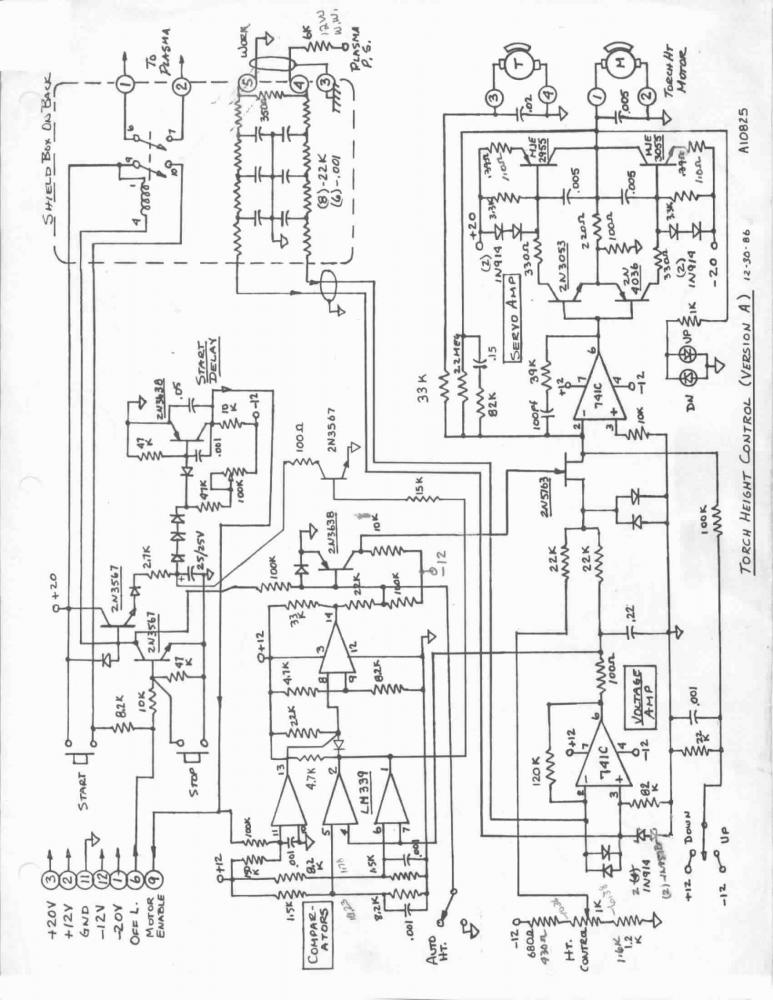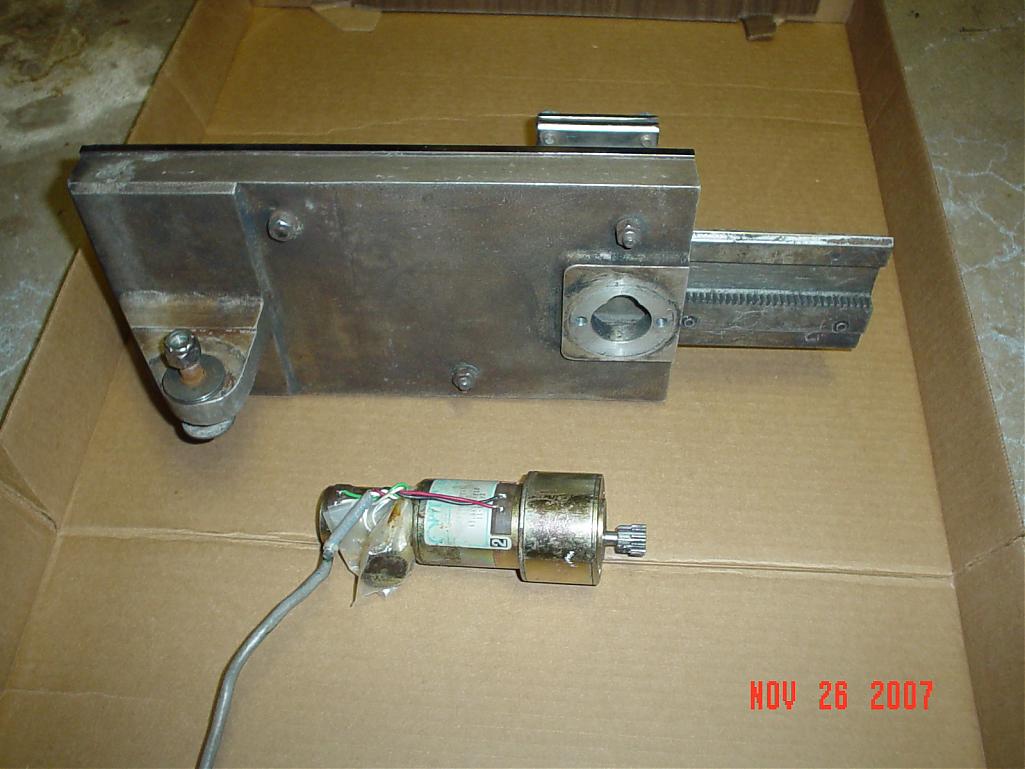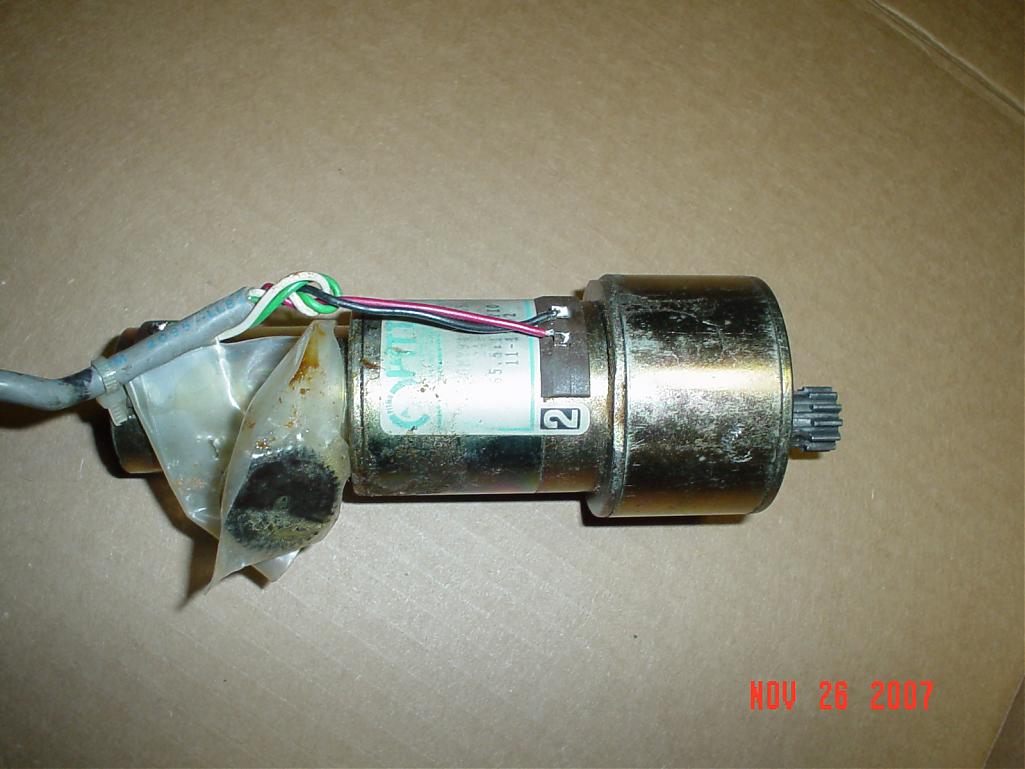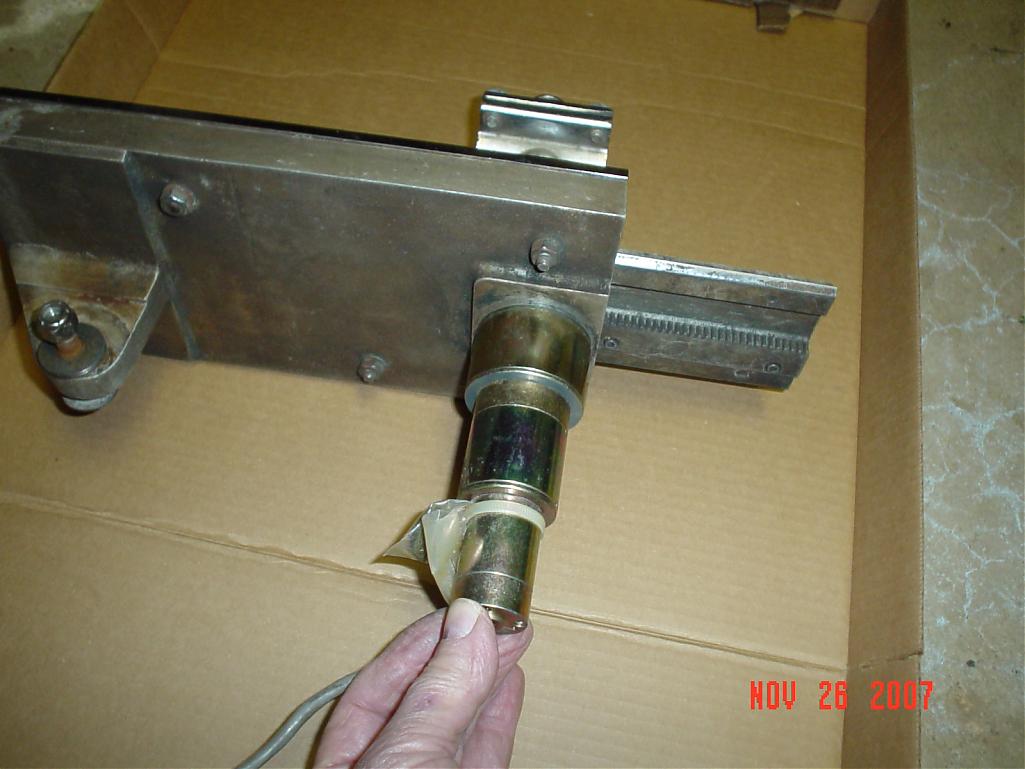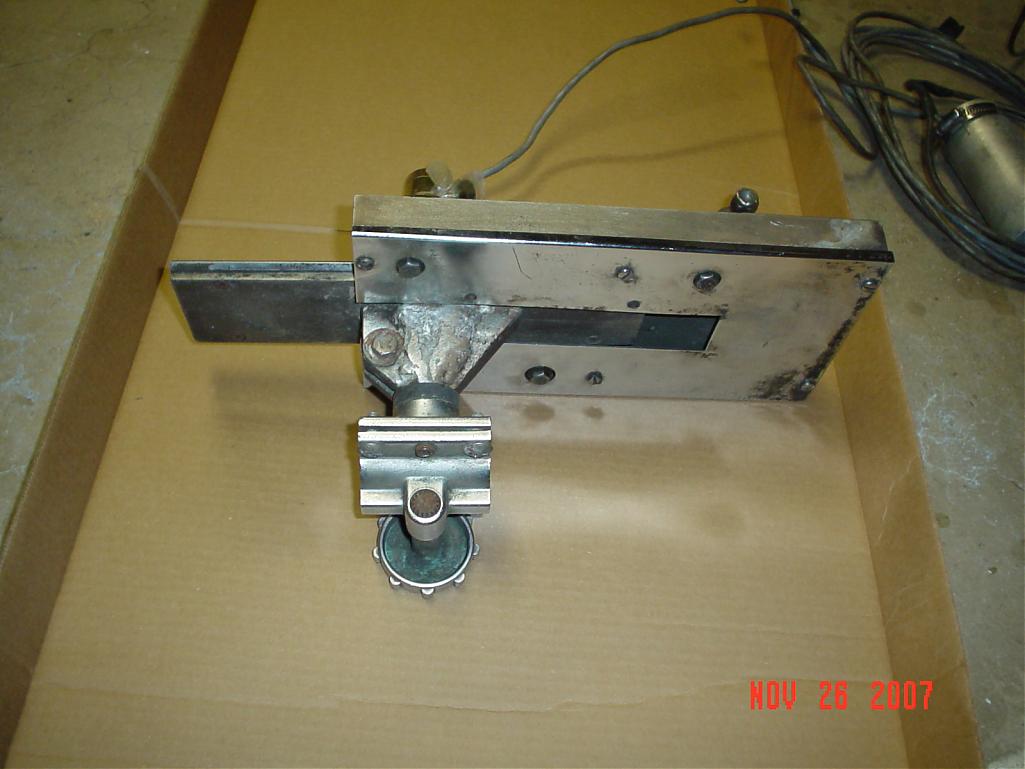Jcc3inc's torch height control
From jcc3inc's post: Torch Height Control (Version A) Explanation.
The reason a torch height control is needed is to keep the tip of the plasma torch at an optimum height above the workpiece during the cutting operation, so that the best quality cut is obtained. Other factors influencing cut quality are torch speed and plasma current as well as the condition of the torch consumables.
More sophisticated torch height controls can establish initial height over the workpiece before the cut starts (this pierce height is adjustable), and raise the torch after the cut has ended just before the machine traverses to the next start point (retract height).
This unit was used for controlling the plasma torch height above the workpiece during cutting. This specific unit was used with an optical tracing system. With very slight modification, it was also used with a CNC controller. Features which it has are:
1) Pushbutton start/stop of the cutting operation 2) Torch height control by measuring arc voltage. Height is front panel adjustable. 3) Height control disabled by arc voltage too low, too high, or externally disabled. 4) Manual up-down control of torch with LED indicators 5) Linear DC servo control of torch height
The circuit operation follows. See upper right of schematic. The plasma arc voltage is sampled inside the plasma power supply. A 6K, 12W wirewound resistor is connected inside the power supply before the point where the high frequency start in added to the plasma torch lead. This goes to pin #4 of the shielded cable The workpiece ground is tied to pin #5 with the shield being pin#3. Pins #1 and 2 are used to turn on/off the plasma power supply by using the relay shown. All these components are in a shielded box to minimize RFI.
The voltage sample is reduced to 350/(6000 + 350) or .055 of the plasma voltage, so if the torch voltage is 100VDC, this sample is about -5.5 VDC. The sample goes thru a short shielded cable to the Voltage Amp, lower left corner. This amp outputs about 6.5 to 10V depending upon the plasma arc voltage. The voltage goes to the comparators; if the voltage falls within the right range AND the motor is enabled, the LM339 pin 14 will be at 0 volts, the 2N3638 will conduct, the gate of FET 2N5163 will be at zero enabling the Servo Amp to operate. Note that a positive voltage is supplied by the Voltage Amp to a 22K resistor while the Ht. Control feeds a negative voltage to a second 22K. These join at the summing point for the 741C amp of the Servo Amp. The Servo Amp causes the Torch Ht Motor to run so that the arc voltage will be equal and opposite the voltage at the Ht Control pot wiper.
The upper left connector brings in voltages and enabling voltages. Because we had +/- 20VDC available, it was used as well as +/- 12VDC . The system could be made to operate on +/- 12VDC. A start delay was used to keep the THC from operating for a short time after the Start button was pushed.
The upper right relay could be left out if other means were used to start the plasma. We used a Pittman motor-tach-gearbox to control the torch. With slight revisions, the Tach could be eliminated; running with a tach makes the circuit a bit easier to design, but adds to the cost.
I have attached pictures of the torch lifter and motor.dsc00
Pictures:
